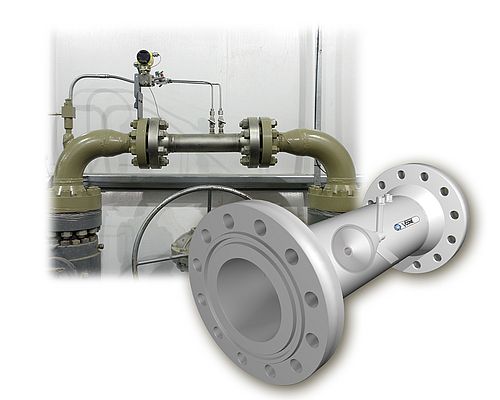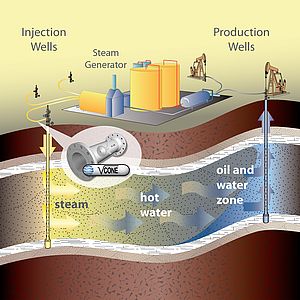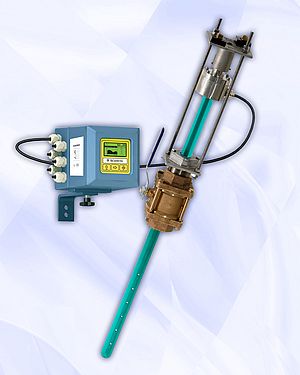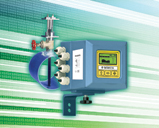Designers of WAG (Water Alternating Gas) Injection Systems for mature oil/gas reservoirs will find that McCrometer’s V-Cone flow meter features a space-saver design that reduces both installation and operational costs while improving oil production efficiency. In a typical WAG system, this flow meter is installed as a master meter at the CO2 source with stainless steel piping split run to as many as 16 injection wells. Even with 16 pipe runs, the master meter maintains high accuracy when the volumes of the16 pipe runs are added together. The meter itself also requires virtually no maintenance, only a simple calibration check of the transmitter. It remains accurate for more than 25 years. Its low-maintenance, no-moving-parts design eliminates the need to shut down production for calibrations, inspections or regular primary element replacement. This saves money by increasing production up-time and in parts and labor. With built-in flow conditioning, the meter features advanced differential pressure (dP) technology to nearly eliminate the up- and downstream straight pipe runs required by other dP instruments, such as orifice plates and venture tubes. Requiring only 0-3 straight pipe diameters upstream and 0-1 downstream for precise operation, it reduces typical straight run by 70% or more as compared to traditional flow measurement technologies. As WAG CO2 gas requires stainless steel piping, the shorter pipe runs required contributes to cost saving compared to Orifice and other types of meters. Installation costs are significantly lowered in term of expensive stainless steel piping and the physical size of the CO2 pump room. The meter is inherently more accurate than traditional dP instruments because of the flow conditioning function built into its sensor design. Its centrally located cone interacts with the fluid steam, reshaping the velocity profile to provide a stable signal that increases measurement accuracy. The pressure difference exhibited between the static line pressure and the low pressure created downstream of the cone is measured via two pressure sensing taps, one placed slightly upstream of the cone and the other located in the downstream face of the cone itself. The pressure difference is then incorporated into a derivation of the Bernoulli equation to determine the fluid flow rate. The versatile meter is available in line sizes from 12.7 to >3048 mm in materials and with flanges compatible with any application. It operates over a wide flow range of 10:1, is accurate to ±0.5% and offers repeatability to ±0.1%. It features standard beta ratios of 0.45 to 0.85 with custom betas available. It is constructed of rugged Duplex 2205, 304 or 316 stainless steel, Hastelloy C-276, 254, SMO and carbon steels with special materials and testing available on request.





















